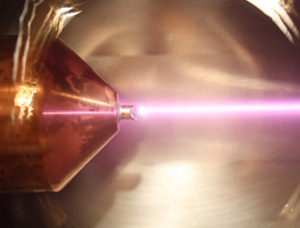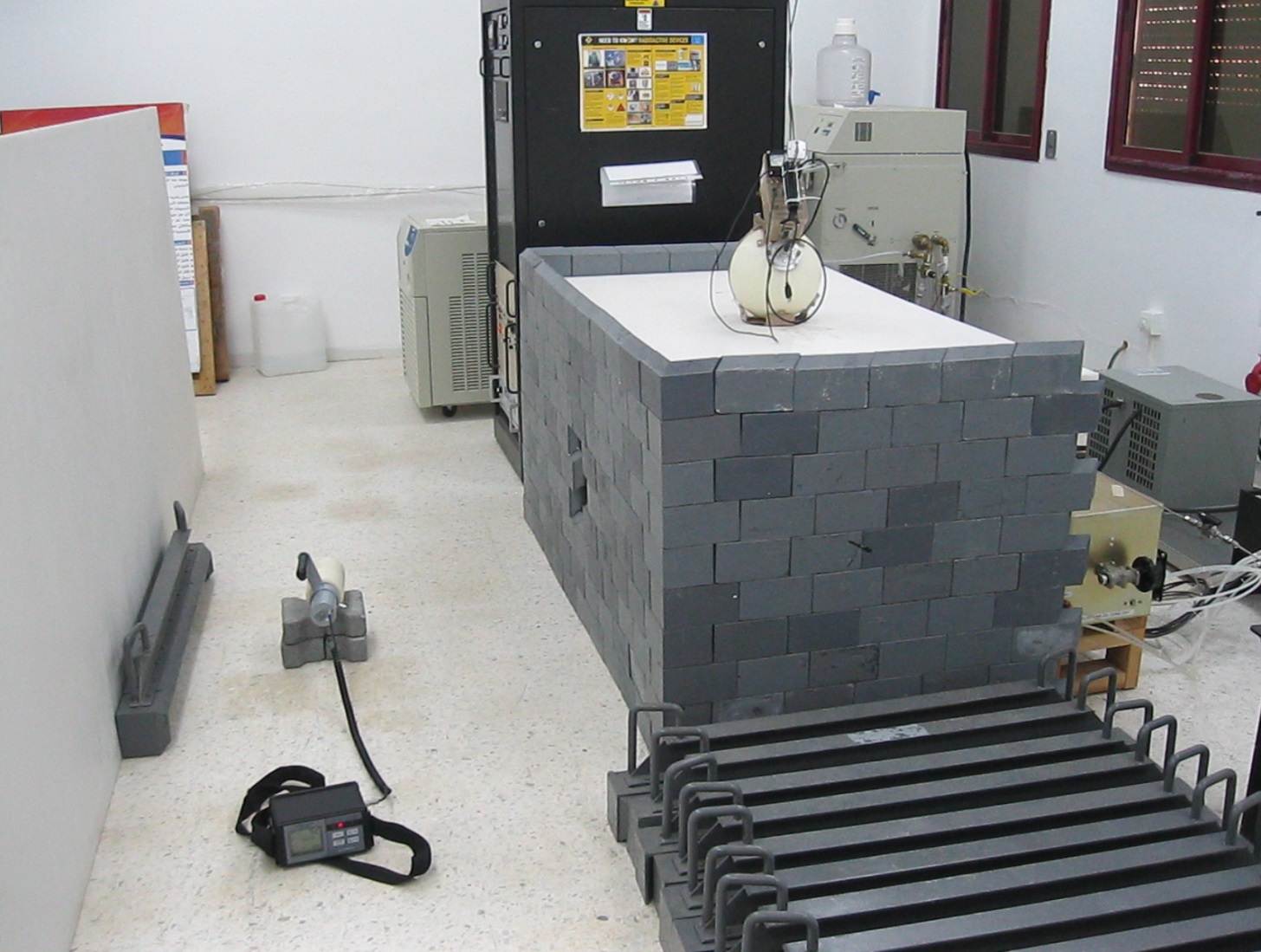Neutron Emission Angle and Energy
D-D and D-T generators
Neutron Generators that are available from Adelphi Technology are based on the Deuterium-Deuterium (D-D) and Deuterium-Tritium (D-T) reactions:
- D+D=He-3 + n (2.45 MeV)
- D+T=He-4 + n (14.1 MeV)
Ions are accelerated to between 70kV and 225kV (depending on the generator and the desired yield) and they are implanted into a metal target either within or on the surface of the neutron generator. Some of these accelerated ions impact other implanted ions in the target and the above fusion reactions can occur. When fusion happens, the neutrons can be emitted in all directions, randomly . Never the less, there is a slight increase in the forward direction (the direction the ions are travelling when they impact the target). This occurs because the ions emit energy in their ‘rest frame’. The rest-frame is locked to the center of mass of the ions before the collision. This frame has a speed (relative to the generator) of half the speed of the ions. So, the fusion products are emitted in all directions (conserving momentum), and because the rest frame is moving before the fusion reaction, after the fusion reaction there is a preferential increase in the probability of the neutrons being emitted in the forward direction. Similarly the energy of the ion beam adds to the energy of the fusion reaction leading to a change in energy as a function of position.
The effect is small, but potentially observable, for D-D neutron generators because the kinetic energy of the ions (70 keV to 225 keV =0.07 MeV to 0.225 MeV) is a small, but significant percentage (3% to 9%) of the fusion reaction energy (2.45 MeV).
The D-T reaction leads to more energetic neutrons (14.1MeV), so the effect for 70 to 225kV acceleration would be only 0.5% to 1.6% which would be much more difficult to measure.
The neutron yield and the energy of the neutrons can be calculated, and is shown in the images below.
Thermal neutron generators
Thermal neutron generators made by Adelphi Technology employ the D-D reaction and a moderator placed within the generator close to the target. The moderator is placed were the neutron yield would be strongest, taking advantage of the slight improvement in yield in the forward direction. Neutrons then collide with the nuclei in a moderator material (typically High Density Polyethylene, HDPE). With each collision they loose energy and the neutrons eventually become ‘thermalized’ they have the same energy as the materials that are causing the neutrons to moderate. This moderation takes a distance, and the ‘bright spot’ of thermal neutrons has an approximately 100 mm diameter.
DROSG and SCHWERER Page 116 Figure 17
Body, Z. "Handbook on Nuclear Activation Data." IAEA Technical Reports Series 273 (1987): 29.
Thesis, Casey Rhyne– “Development of Tagged Low Energy D- and H-Based Scintillator Reflector Neutron Sources and Characterizations of a D-D Neutron Generator for Calibrations of the LZ Detector”
Thesis: https://repository.library.brown.edu/studio/item/bdr:eqjnr8x6/PDF/
Images
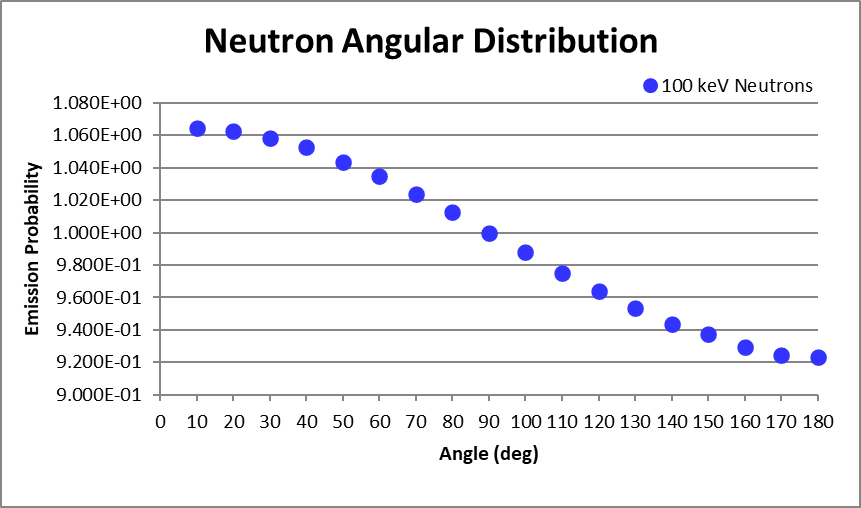
D-D Yield vs. angle
Neutron yield as a function of angle, Craig
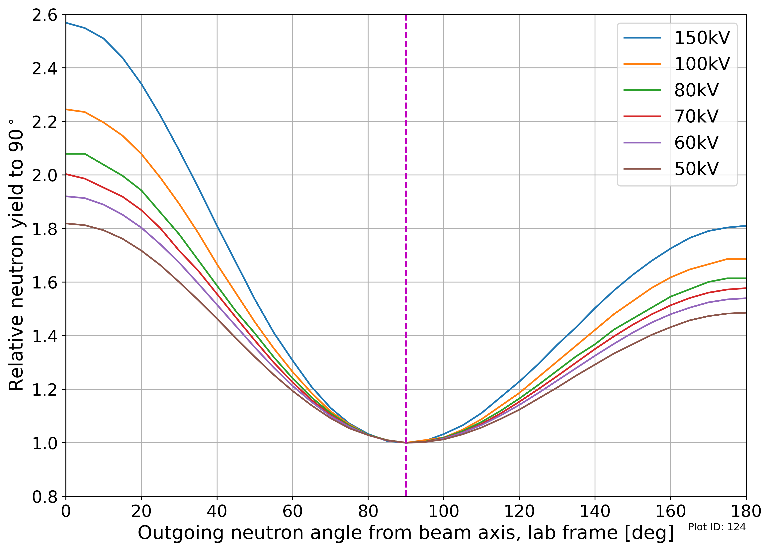
D-D Yield vs. angle
Neutron yield as a function of angle
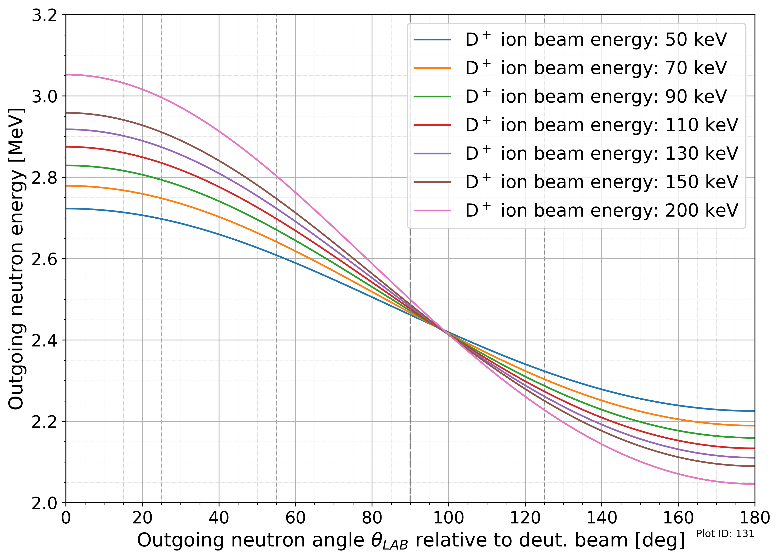
D-D Energy vs. angle
Neutron energy as a function of angle
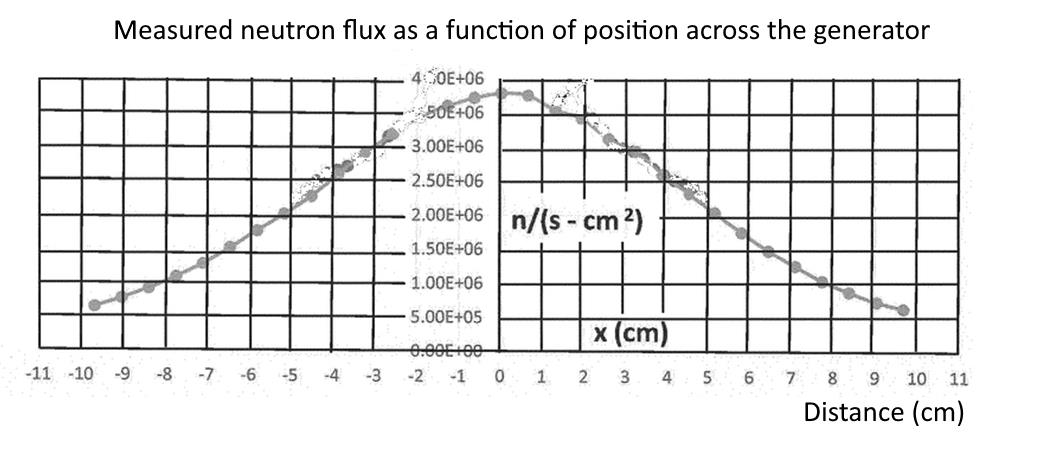
Thermal flux as a function of position
Thermal neutron flux across the DD110-M generator
